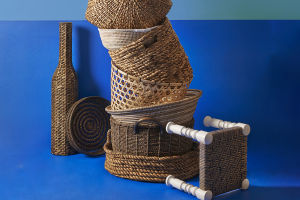In the realm of Western musical instruments, the trumpet reigns supreme, cherished worldwide for its vibrant, piercing, and radiant tones.
Serving as the soprano instrument of the brass family, it effortlessly delivers both powerful fanfares and lyrical melodies, while the addition of mutes creates an array of mysterious colors.
The trumpet boasts a rich history dating back to the ancient Egyptians and Germanic tribes of the 15th century B.C., evolving over thousands of years to become an indispensable component of symphony orchestras, wind bands, jazz ensembles, and brass repertoires.
Its versatility also shines in solo performances, gracing stages around the globe. With each passing year, from school marching bands to various folk music groups, the trumpet's presence in daily life grows, attracting a burgeoning number of students eager to learn its secrets. As a professional trumpet teacher in a music school, witnessing the trumpet's widespread adoration brings immense gratification.
Through years of teaching, we have encountered trumpet learners at various skill levels. We've observed that some students possess a strong desire for proficiency, aiming to master advanced techniques and a vast repertoire, often at the expense of honing basic skills. This imbalance leads to a frustrating cycle of stagnation, where the aspiration for speed surpasses actual progress, underscoring the critical importance of foundational training. Recognizing this challenge, we offer professional guidance on mastering essential trumpet skills, aiming to empower learners on their musical journey.
A prevailing notion over the years is the gender association with musical instruments, often labeling brass instruments as masculine, leaving many to believe that women cannot play them. However, with advancements in musical instrument technology and evolving societal norms, this antiquated belief is gradually fading. More women are embracing the trumpet, exemplified by renowned American female trumpet player Reinhart.
While the trumpet's lip vibration articulation requires specific lip characteristics, such as a lean shape and slightly flat teeth, children are advised to wait until after their teeth have settled before learning. Moreover, possessing a good ear for pitch and rhythm is essential for mastering any musical instrument, providing a solid foundation for trumpet proficiency. Unlike woodwind instruments, which rely on reed vibration, the trumpet's sound quality and volume depend on lip vibration frequency and amplitude, distinguishing it significantly in terms of playing technique.
Achieving optimal lip vibration and effortless playing poses a challenge for every trumpet learner. Incorrect embouchure, mouthpiece placement, breathing techniques, and muscle adjustments can adversely affect tone quality and performance. Correct mouth shape entails coordinated contraction of mouth and cheek muscles, forming a balanced, smiling-like configuration, allowing for effective lip vibration and airflow. Beginners should avoid improper techniques, such as over-smiling or puffing the lips, as they hinder progress.
Effective instruction focuses on identifying and correcting mouth shapes, regulating lip and facial muscle coordination, determining mouthpiece placement based on individual conditions, conducting lip vibration exercises, and mastering breath control. Despite common misconceptions that trumpet playing is straightforward, investing in foundational training early on lays the groundwork for future success. Aspiring players are encouraged to seek experienced teachers who are passionate about trumpet instruction, ensuring a solid foundation for musical growth and excellence.


